
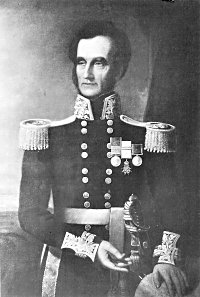
On May 7th 1869 Colonel George Gawler KH, late of the 52nd Light Infantry died at his home, Southsea Villa, and was subsequently buried in Highland Road Cemetery. A memorial plaque was raised in his honour and placed in the newly consecrated church of St Simon's on Waverley Road. The plaque recorded his exploits with the Duke of Wellington's Army in the Peninsular War, following him through to the Battle of Waterloo. It further records that Gawler was appointed Governor of South Australia in 1838. At this point George Gawler fades from public awareness for the next 135 years.
In Australia however he was not forgotten, but it wasn't until 1979 that his name was included in the Australian Dictionary of Biography. The article by R Hetherington gave light to extensive research into George Gawler's tenure as Governor of the state. During this short period Gawler had established himself as a national hero, to the extent that a town and a mountain were named after him. The reason he managed to achieve this was that he simply overspent his budget opening up the interior of the state to enable settlers to colonise the land. The British Government were not amused and recalled Gawler after less than three years, but it had been long enough to ensure the people of South Australia would remember him. A full account of his exploits there is available at the Australian Dictionary of Biography.
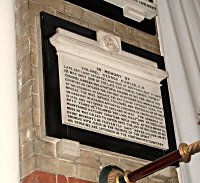
GEORGE GAWLER was born on the 21st July 1795, and came from a military family; his father, Captain Samuel Gawler of the 73rd Highlanders, having been killed at the storming of Fort Maggerall (Southern India) in 1804, and his grandfather, John Gawler, having been present at the battle of Quebec in 1759.
He entered the Royal Military College (then at Great Marlow), as a Gentleman Cadet, in October 1808, was promoted Corporal and Under Officer, and received a free commission as Ensign in the 52nd Light Infantry on the 4th October 1810, being then only 15 years and 3 months old. In January 1812 he proceeded with the 2nd Battalion 52nd to Lisbon, and shortly after arrival was transferred to the 1st Battalion, with which he took part in the assault on Badajoz on the 6th April 1812.
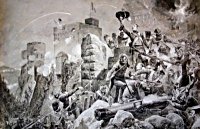
The Historical Record of the 52nd records that at the age of only 17 years Gawler was the Ensign of the Storming Party, taking charge of the six ladders at the extreme head of the stormers. Gawler later reports that all was still as they descended an escarpment but on the top of the parapet he was struck by a musket ball on the bone of the right knee, and he rolled over the left face of the ravelin into three or four feet of water. A British soldier made Gawler take hold of his accoutrements that he might drag him up a ladder; "or," said he, "the enemy will come out and bayonet you." The soldier was just stepping back, when a shot stretched him lifeless and threw his body backward into the ditch. Gawler crawled out upon the glacis without further injury.
Gawler was promoted Lieutenant on 12th May 1812, and served with the Regiment until the end of the war in 1814. He was wounded by a musket shot in the neck at the skirmish at San Munoz, November 17th 1812, and was present at Vittoria, Vera, the Nivelle, the Nive, Orthes, Toulouse, and many minor engagements, receiving eventually the Peninsular Medal with seven clasps.
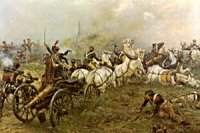
At the Battle of Waterloo Gawler was in command of the right Company of the 52nd after his Captain had been wounded. He had full opportunities of observing, as well as of taking part in, the memorable manoeuvre that resulted in the defeat of "that portion of the Imperial Guard of France, about 10,000 in number, which advanced to make the last attack on the British position." The quotation is from Lord Seaton's - Regiment at the Battle of Waterloo, by the Rev. William Leeke, who carried the Regimental Colour at Waterloo, and who, it maybe interesting to remark, subsequently married George Gawler's sister-in-law.
After this Gawler did duty with his Regiment in France, England, and New Brunswick, marrying in 1820 Maria, daughter of John Cox, of Derby and Quarndon near Derby. In 1825 he purchased a Company in the Regiment, and in 1831 his majority, being promoted, on the 12th August 1834, to an unattached Lieut-Colonelcy. For four years he remained practically unemployed, though it is unnecessary to say that he found ample work to occupy his leisure time. For some years he had been assisting Captain Siborne in his famous model of Waterloo, now at the National Army Museum, Chelsea. The full story of the model is told in "Wellington's Smallest Victory" by Peter Hofschroer who is of the opinion that "Gawler probably thought his contribution to Siborne's research invaluable. Siborne probably could have done without it...........He bombarded poor Siborne with massive missives over a period of years and was obsessed with the role of his regiment."
In 1838 Gawler was appointed to the Governorship of South Australia as a 'safe pair of hands' and his reputation, at least as far as South Australia is concerned, was sealed.
At home in 1842 Gawler was forced into semi-retirement and "On the 21st of May, 1850," says the Historical Record of the 52nd, " Brevet-Colonel George Gawler was gazetted from half-pay into the Regiment, in order to enable him, after a long and honourable service in the 52nd, to retire from the Army by the sale of his commission. He spent the rest of his life in Southsea, finding life outside the military world "irksome". He maintained his interest by establishing a Bible reading class for military and Naval officers, which by all accounts was very popular.
The 1861 Census, shows Gawler residing at Kent Lodge on the corner of Kent Road and Queens Crescent. The entry in the Census includes the fact that Gawler was born in London, Middlesex, which contradicts earlier suggestions that his birthplace was at Chulmleigh Hall, Chudleigh, Devon. Living with him at Kent Lodge were his wife Maria, daughters Jane (26) and Katherine (24) and two servants. Kent Lodge is located in what was in 1861 one of the most fashionable areas of Southsea. It is not known if he owned the property or was simply renting it prior to moving to his final address a short time later.
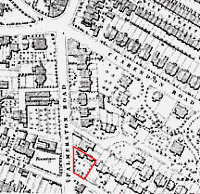
The last years of George Gawler's life were lived at Southsea Villa, Palmerston Road, Southsea which was between Villiers Road and Auckland Road East. An Ordnance Survey map of 1867 shows the house to have been of substantial dimensions, sitting in it's own grounds, with what appear to be formal gardens between the house and Palmerston Road (see map - the house is outlined in red). The house was demolished soon after his death but some of the garden walls are thought to remain.
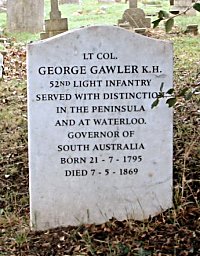
Although it was known that George Gawler was buried in Highland Road Cemetery (Section A, Row J). The exact location of the grave had not been identified in 2002 when the Royal Greenjackets Regiment decided to recognise Gawler's importance to the Regiment by erecting a new headstone (see photo). The stone was placed under a tree in the proximity of the grave.
In July 2005, further investigation of the area by the author uncovered the broken remains of the original headstone, one piece of which was still in place, thereby identifying the exact location of the grave. This is about 20 metres east of the replacement headstone, immediately adjacent to a path. George Gawler is therefore probably the only man in the cemetery to have two headstones.
Tim Backhouse
Southsea, 2007
REFERENCES
"Gawler, George (1795 - 1869)" by R Hetherington, ADB
"George Gawler, Alife Sketch" by Jane Cox Gawler
"The Historical Record of the 52nd"
"Wellington's Smallest Victory" by Peter Hofschroer
ADDITIONAL MATERIAL
52nd Oxfordshire Light Infantry Re-enactment and Research Group
The Royal Green Jackets Museum
Graeme McVitty
Cynthia Sherwood